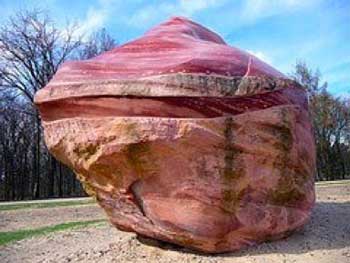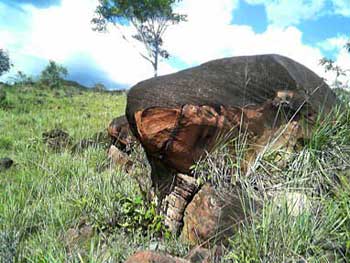The German “Artist” Who Kidnapped Grandma
Caridad

HAVANA TIMES, March 30 — Her name is Kueka, and grandfather Kueka is hoping she returns. The entire Pemon community is also hoping she comes back, but more than waiting, they’re demanding her return.
What would you do if someone convinced the owner of the building where you live to give away your grandmother?
For several years I began to have suspicions about what we usually call “art.” People have committed many stupid things in the name of art to the detriment of nature and to other less moneyed cultures.
In this respect, the original peoples of Latin America have been big losers.
One of those men, who society likes to think of as an artist, decided to create a hyperbolic work that he calls the Global Stone Project. It was designed to stimulate energy for world peace.
As it’s increasingly difficult for artists to express themselves in any “new,” “innovative,” “different” or “distinctive” manner, Wolfgang Von Schwarzenfeld came up with the idea of setting off in his Pegasus sailboat to collect stones from the five continents.
This is what in 1998 brought him to Santa Cruz de Mapauri, in southeastern Venezuela’s Canaima National Park. His power of persuasion was sufficient to convince the president of the Institute of National Parks, Hector Hernandez Mujica, to “simply donate” a beautiful red sandstone that this German had “found” – though he could have also said that he “discovered” it.

Like any person with the facility for convincing, the artist didn’t have time to try to understand or couldn’t understand the language of the indigenous Pemon people, who objected with their having to make this “voluntary donation.” In fact, they fought to prevent it.
The “artist” denies the sacredness of the stone because it’s sandstone, which in “his culture” is a stone that lacks any “economic value.”
Perhaps this “project for the good of humanity” only included people from cultures similar to his own… but I suspect that the only human he was interested in was himself.
What’s more, now after 13 years of the struggle between the Pemon people and the Institute of Cultural Heritage of Venezuela, the importance of the “art” has now been forgotten and he supports the return of the stone, or Grandmother Kueka, or whatever he wants to call it.
The origin of the Pemon people is linked to this stone. For them, its removal created a social and ecological imbalance.
This community says that the Grandfather (the sacred stone that accompanied Grandma Kueka) has been left alone. However this stone, by communicating through the people’s shamans, is also demanding the return of its ancient companion.
